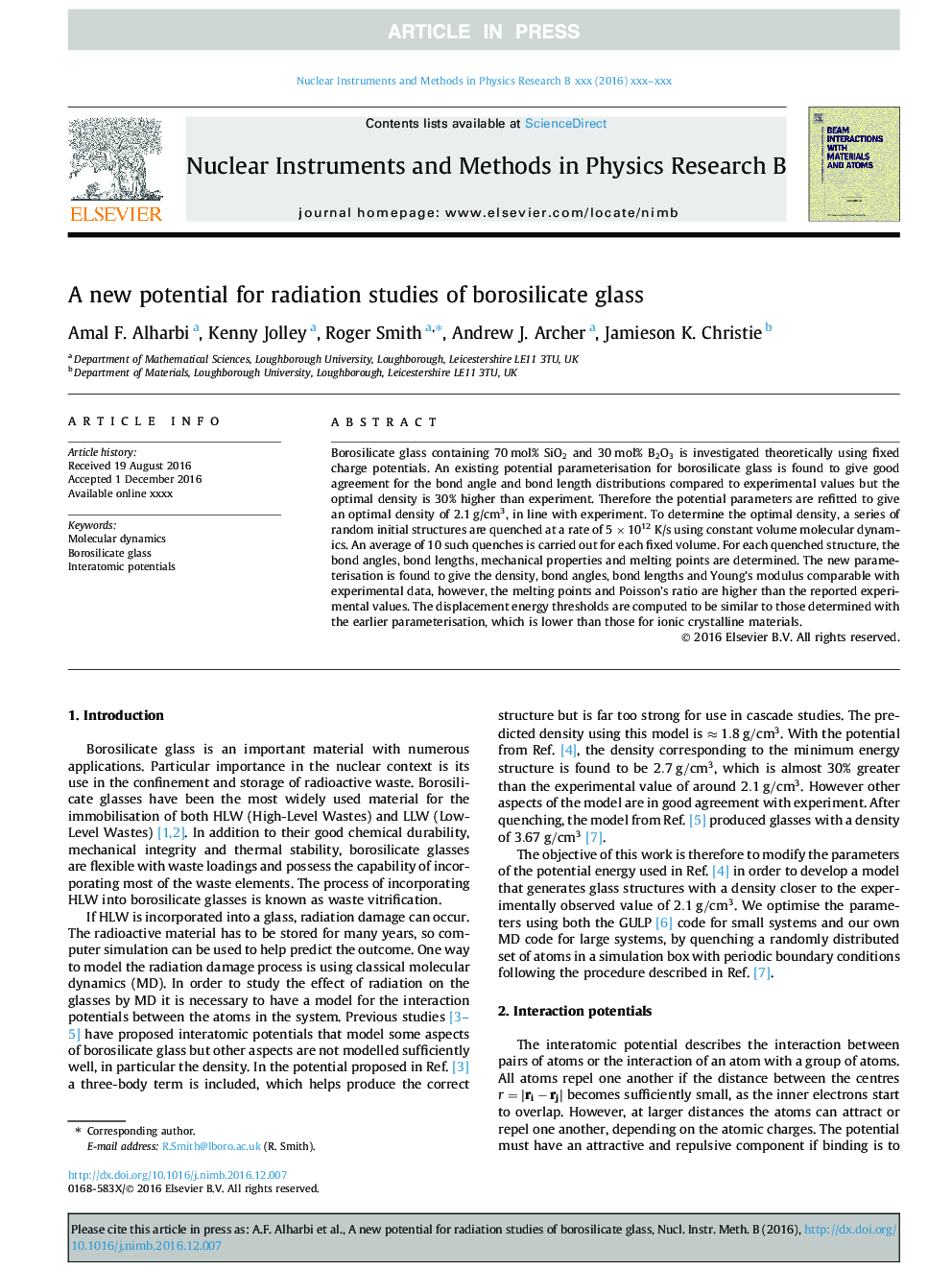| Article ID | Journal | Published Year | Pages | File Type |
|---|---|---|---|---|
| 5467666 | Nuclear Instruments and Methods in Physics Research Section B: Beam Interactions with Materials and Atoms | 2017 | 4 Pages |
Abstract
Borosilicate glass containing 70Â mol% SiO2 and 30Â mol% B2O3 is investigated theoretically using fixed charge potentials. An existing potential parameterisation for borosilicate glass is found to give good agreement for the bond angle and bond length distributions compared to experimental values but the optimal density is 30% higher than experiment. Therefore the potential parameters are refitted to give an optimal density of 2.1Â g/cm3, in line with experiment. To determine the optimal density, a series of random initial structures are quenched at a rate of 5Â ÃÂ 1012Â K/s using constant volume molecular dynamics. An average of 10 such quenches is carried out for each fixed volume. For each quenched structure, the bond angles, bond lengths, mechanical properties and melting points are determined. The new parameterisation is found to give the density, bond angles, bond lengths and Young's modulus comparable with experimental data, however, the melting points and Poisson's ratio are higher than the reported experimental values. The displacement energy thresholds are computed to be similar to those determined with the earlier parameterisation, which is lower than those for ionic crystalline materials.
Related Topics
Physical Sciences and Engineering
Materials Science
Surfaces, Coatings and Films
Authors
Amal F. Alharbi, Kenny Jolley, Roger Smith, Andrew J. Archer, Jamieson K. Christie,
